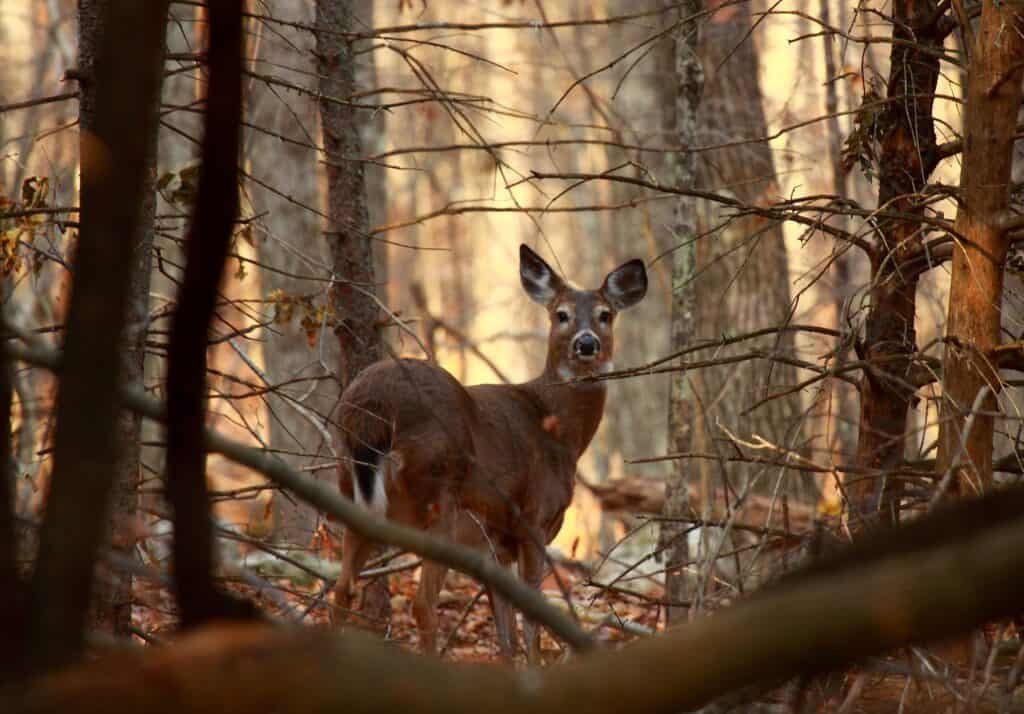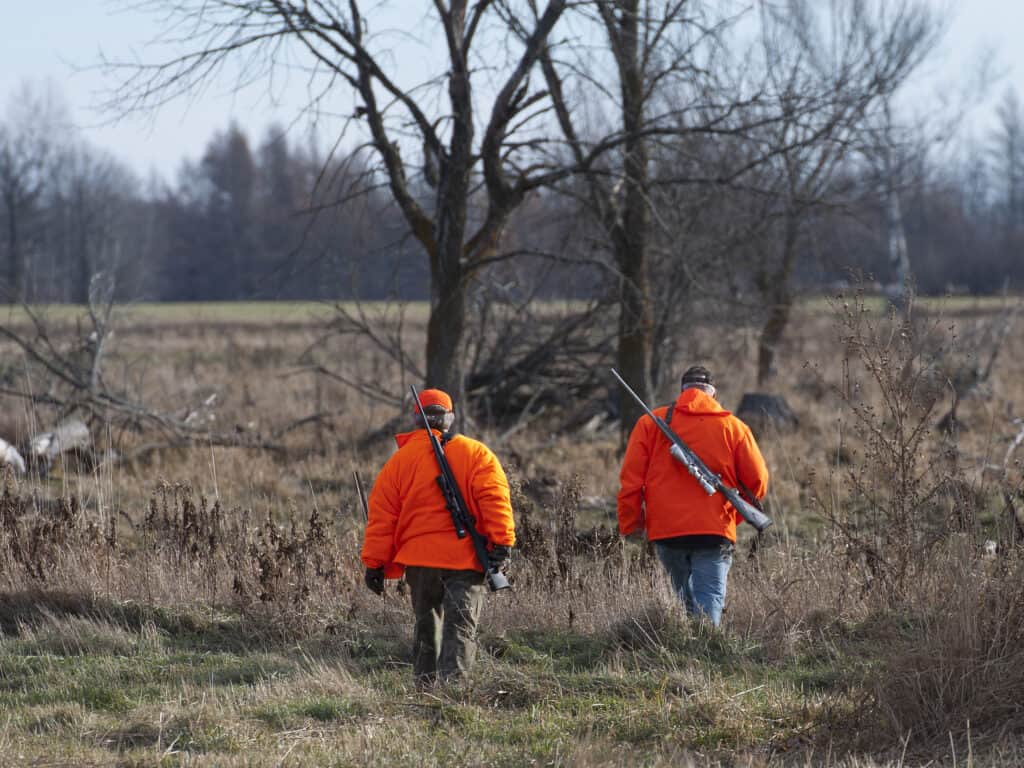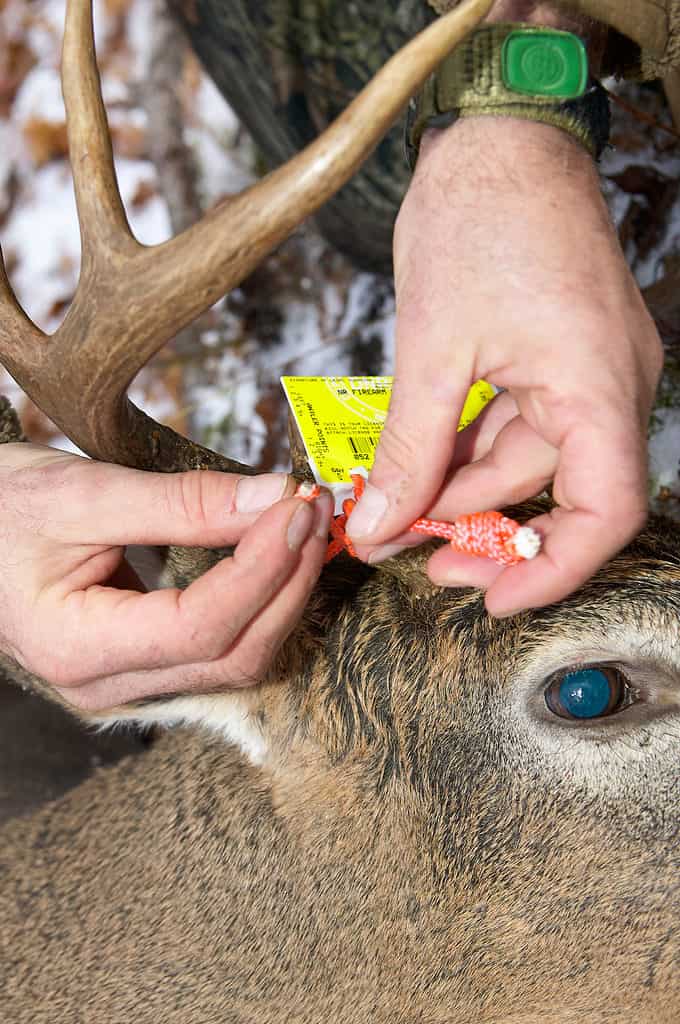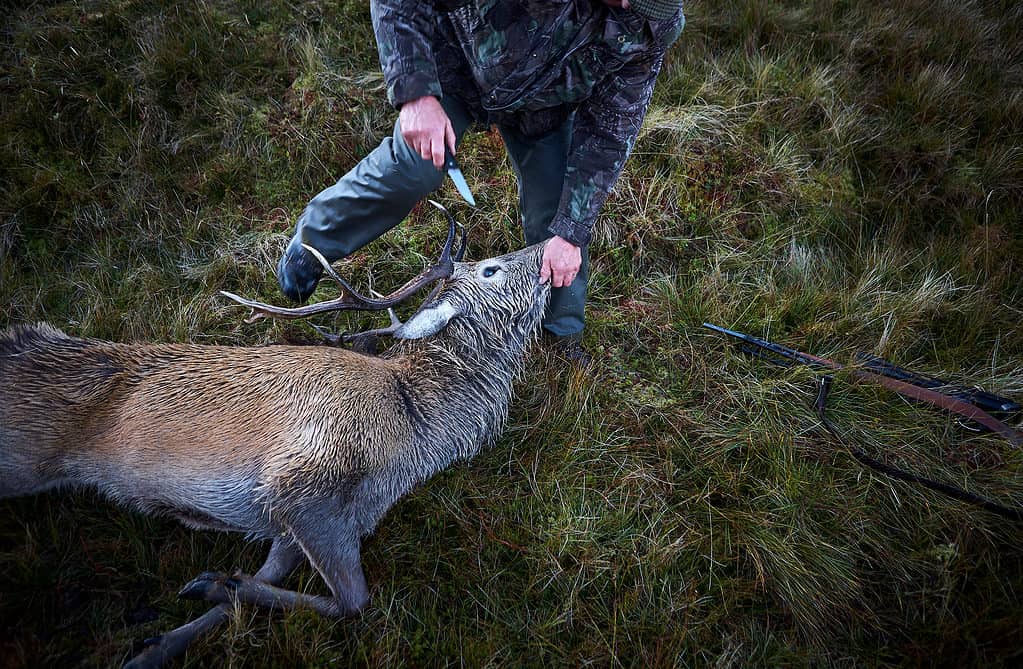Hunting in Delaware is pretty similar to hunting in other areas. However, there are some key differences. Therefore, it’s important to learn about all of Delaware’s hunting regulations before you take to the field.
To start hunting, you need a license. There are many types of licenses, though. Furthermore, there are also permits, which you may need depending on what you’re hunting.
Let’s take a look at all the license and permit regulations, as well as other regulations you’ll need to keep in mind when hunting deer.
Licenses and Permits

You need a hunting license to hunt any wild game species in
Delaware
.
©Gary Gello/Shutterstock.com
Delaware sells most of its licenses online. You can visit their online site at any time and purchase a license. You can also print out your license to carry with you while hunting.
You can also purchase a license from 40 different agents. There is one office in the state that sells licenses, as well. You can view a complete list of licensing agents on the state’s website.
While most hunters need a license, this isn’t true in all cases. Occasionally, there are exceptions. For instance, residents under the age of 13 may hunt without a license as long as they are accompanied by someone 18 years or older. This older mentor must have a hunting license or be otherwise exempt.
Resident seniors over the age of 65 years of age may hunt without a license. However, you must carry proof of age and residency.
Resident property owners who live on farms or own farms of more than 20 acres can hunt on the property without a license. Their immediate family can also hunt on this farm, as long as they reside on it.
Those participating in organized fox hunts may participate without a license as long as they do not have a weapon.
Military exemptions are also available. If you are a veteran with a disability, you may hunt without a license. However, you must carry proof of your disability. Residents that are patients of a hospital in Delaware due to a military injury may also hunt without a permit while patients of that hospital.
Members of the military currently stationed in Delaware are accepted as residents, even if they previously lived elsewhere.
Conservation Access Pass
If you plan on driving within a Delaware State Wildlife Area for any reason, you must purchase a Conservation Access Pass. This includes hunting, as well as birdwatching, and hiking.
The funds from this pass help the state support the area. You do get a free pass with the purchase of a hunting license. However, you must have your vehicle registration with you when purchasing the license. You can transfer this license at any time for a small fee.
You must display this pass on your vehicle when in a wildlife area.
If you are exempt from a hunting license, you will still need to purchase one of these passes. You may also purchase multiple passes if you use different vehicles for hunting.
There are several types of licenses. 13 to 15-year-olds can purchase a junior hunting license. When they turn 16 during the season, they can upgrade to an adult hunting license.
Hunter Education Program

To obtain a hunting license, anyone born after January 1, 1967, must now complete a hunter education course.
©Steve Oehlenschlager/Shutterstock.com
Delaware’s hunter education program was established in 1970. To obtain a hunting license, anyone born after January 1, 1967, must now complete a hunter education course. There are many volunteer instructors, which means that most classes are free. The majority of the program discusses firearm safety and how to hunt legally.
Once someone reaches the age of ten, they may take and pass this course. A live firing exercise is included and free of charge. Even ammunition and firearms are included. We recommend completing training at least a month before you plan on hunting. You can print out your certificate a few days after you complete the course.
You must sign up for class beforehand, as there are limited seats.
Those under the age of 12 must have an adult come with them to the course. Those under ten cannot receive a certificate. Those of a significantly smaller body size may have a hard time completing the live fire portion.
There are a few types of courses available. The first one is the traditional, live course. This course takes place in a classroom and includes a live fire exercise. While the firearms and ammunition are provided, you’ll need to bring your own safety gear.
You can also complete part of the course online. However, you must go through a private vendor. You can take the course for free. With that said, you do have to pay a fee when the vendor certifies your completion.
On top of the online course, you do have to complete a field day. This field day includes a live fire exercise, some field skills, and obstacle crossings.
Bowhunter Education
If you want to hunt with a bow, it is recommended to take a bowhunting course. This isn’t a requirement in Delaware, however. Extra information about bowhunting and reading game signs, as well as using tree stands.
Youths under 14 must be accompanied to this course.
Hunting Regulations

You cannot discharge a firearm within 15 yards of a roadway.
©Volodymyr TVERDOKHLIB/Shutterstock.com
There are many regulations that affect all hunting. If you’re hunting deer, you’ll need to keep these in mind, even though they aren’t species-specific.
Hunting out of season, without the proper license, or over your limit is not allowed. You can also not hunt within 100 yards of a structure. However, these distances may vary depending on where you’re at.
You cannot discharge a firearm within 15 yards of a roadway, and you may also not shoot across a road.
Trespassing is always illegal, even if it is not posted. You may also not use night vision, artificial light, or infrared devices.
Weapon Regulations
These regulations apply to all weapons, including those that you use to hunt deer. Only certain weapons can be utilized for hunting.
You are not allowed to have any loaded weapon when in a vehicle, boat, or on farm machinery. You may not transport a muzzleloader with the charge in the barrel unless you remove the primer and put the gun in a case.
Hunting a night is illegal for deer and most animals. “Night” is defined as an hour after sunset to an hour before sunrise.
You can not hunt with a shotgun larger than a 10 gauge, a fully automatic gun, or a centerfire rifle.
Arrows cannot be poisoned or explosive tipped. When hunting deer, the arrows must be at least 7/8″ wide.
Youth-Specific Regulations and Tips

A licensed adult must accompany youth under 15.
©makalex69/Shutterstock.com
Youth have slightly different regulations for hunting deer. Generally, there are fewer regulations they must follow. However, it’s still important that youth are taught how to hunt ethically and follow regulations.
Youth under 15 must be accompanied by a licensed adult. During the youth-specific season, this adult must be at least 21 and unarmed (as adults cannot hunt during this season).
Under the age of 13, youth do not require a hunting license. However, 13- to 15-year-olds must purchase a junior hunting license. If the youth is turning 16 during the season, an adult hunting license must be purchased.
Deer Hunting Regulations
Sunday deer hunting is allowed in Delaware on private land and on certain publicly-owned areas. However, only deer may be hunted on Sunday.
You may only use your deer tag for the type of deer listed on the tag. Quality buck tags must be used only on bucks with an outside antler spread of about 15. When the tips of the deer’s ears are in the alert position, the ear tips are about 15″ apart. Therefore, you can use this as a measurement.
During firearm hunting periods, you must wear hunter orange of at least 400 square inches. When hunting in a deer blind, the hunter must place 400 square inches of hunter orange outside of the blind.
Deer Report Cards

However, there are some occasions when you may need a carcass tag, such as when you are no longer in possession of the deer.
©CLP Media/Shutterstock.com
In the past, hunters received deer tags to be used on deer carcasses. However, now, deer hunters receive report cards instead. This tag will show all the “tags” available that you have.
Once you take a deer, you simply complete the section on the Deer Harvest Report that represents the deer you’re harvesting. The appropriate section must be punched and the date recorded. You must also add the deer registration number after the deer is registered. The card must be kept on you at all times – not removed and attached to the deer.
However, there are some occasions when you may need a carcass tag, such as when you are no longer in possession of the deer. In this case, you can make your own tag with the required information or print out the tags from the state’s website.
Most individuals will need a carcass tag at some point unless you’re processing the animal at home right away. Dropping off the deer at a processor, hanging the deer to cool, and other situations where you aren’t with the deer require a tag.
Checking a Deer

You may not remove any of the deer meat beyond field dressing until the deer is checked.
©NordKraft/Shutterstock.com
After you harvest a deer, you must check it within 24 hours. You may not remove any of the deer meat beyond field dressing until the deer is checked. You can do this online or by calling the state office. You’ll need to answer several questions, including the number of points and size of the antler spread.
Once your deer is checked, you’ll be given a registration number. You’ll need to give this number to any butcher shop or taxidermist that you bring the deer to.
Chronic Wasting Disease
CWD is a neurological disease that’s very contagious and fatal. It only affects members of the cervid family, including deer, moose, and elk. It is caused by mutated prions that cannot be removed via the body’s usual method. Therefore, these proteins build up over time and eventually damage the brain and nervous system.
Deer can be infected for a long time before symptoms are shown. However, once symptoms do become apparent, the deer dies shortly afterward. Symptoms include loss of body weight, confusion, lack of fear, and strange behaviors. There is no treatment for this condition currently.
Furthermore, there is also no way to test a live animal. Therefore, all testing only occurs on dead deer – most of which are killed by hunters.
Delaware currently has no cases of CWD. However, it has collected nearly 10,000 samples from around the state as the deer population is managed.
To minimize the risk of the disease getting into the state, it is unlawful to transport many types of carcasses into the state. The meat or mount of the deer must be completely processed – with the bones from the meat removed.
Up Next
The photo featured at the top of this post is © iStock.com/Ralph Navarro
Sources
- eregulations, Available here: https://www.eregulations.com/delaware/hunting/chronic-wasting-disease
- eregulations, Available here: https://www.eregulations.com/delaware/hunting/chronic-wasting-disease
- eregulations, Available here: https://www.eregulations.com/delaware/hunting/deer-hunting
- eregulations, Available here: https://www.eregulations.com/delaware/hunting/general-hunting-information
Thank you for reading! Have some feedback for us? Contact the AZ Animals editorial team.






